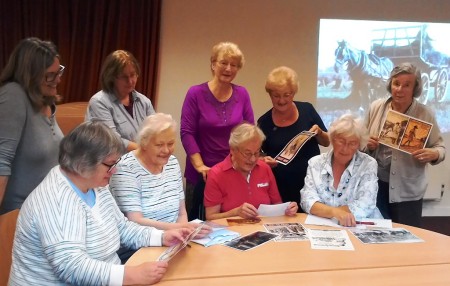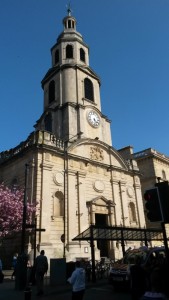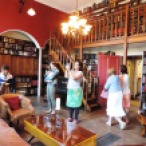Last month, I was delighted to be involved in the organisation of the Home, Food & Family in World War One conference at Avoncroft Museum of Historic Buildings on 5 March 2016.
The event was part of the work I am doing for the University of Worcester’s Volunteers & Voters project, and was organised by Professor Maggie Andrews for the Women’s History Network (Midlands), with financial support from AHRC Voices of War & Peace and the Economic History Society.
This conference explored how housewives, children and the home played a part in producing, preserving and preparing food during World WarOne. The Dig for Victory campaigns of the Second World War have a firm place within popular consciousness yet the similar activities engaged in by people on Britain’s Home Front in World War One, when food became a weapon of war, have hitherto received little attention.
The event brought together over 90 academics, teachers, students and those working and volunteering in heritage organisations or on community projects, to share their ideas, discoveries, interests and research. Our programme of talks was complemented by displays and exhibitions from community history groups.
The speakers were:
- Professor Karen Hunt – University of Keele: ‘The Kitchen is the Key to Victory’: Women, Food and the Great War
- Jennifer Doyle – Kings College, University of London: Everybody’s talking about food: food and women’s magazines in the First World War
- Dr Stella Hockenhull– University of Wolverhampton: Everybody’s Business: Film, Food and Victory in the First World War
At the end of a day there was a panel discussion and Q&A: Researching Home, Food and Family
Panellists:
- Dr Janis Lomas – Independent Researcher
- Julia Letts – Oral Historian and project co-ordinator for The Great Blackberry Pick (HLF-funded project)
- Susanne Atkin – volunteer researcher participating in WW1 in the Vale, focussing on the experience of the 9th Earl of Coventry and his tenants on the Croome Estate, Pershore (HLF-funded project)
- Professor Maggie Andrews -University of Worcester and Voices of War andPeace Community Engagement Centre lead on Gender and the Home Front. Academic lead on WW1 in the Vale (HLF-funded project)
- Chaired by Jenni Waugh – Community History consultant and project co-ordinator for WW1 in the Vale (HLF-funded project)
Community heritage exhibitions and contributions were provided by the following projects:
- Bishampton World War One Remembered,Worcestershire (HLF-funded)
- Croome 100: The Croome Estate during the Great War, an independent research project by Susanne Atkin, in association with WW1 in the Vale and NT Croome.
- Droitwich Library and Ombersley, Wychbold, Hindlip & Tibberton First Schools: The Great Blackberry Pick (HLF-funded)
- Feckenham Remembers, Worcestershire (HLF-funded)
- Hempstead Primary School, Gloucestershire: The Schools Blackberry Pick (HLF-funded)
- Herefordshire Archives & Museums Service: Herefordshire’s Home Front
- Derby: Six Streets WW1 Project (HLF-funded)
- Museum of Cannock Chase, Staffs: schools activity looking at how the War came to the Chase (WW1 training camps and PoW centres)
- NT Croome Plumlines project, Worcestershire (HLF-funded)
- Pershore WI and Pershore Heritage &History Society: WW1 in the Vale (HLF-funded)
- Rotherwas Munitionettes project, Herefordshire (HLF-funded)
- Staffordshire Archives: Digitisation of the WW1 Tribunal papers
- Worcestershire Archives & Archaeology Service: Worcestershire WW100 (HLF-funded)
- Worcestershire Poets: Life after the War and the Spanish Flu
TWITTER & INSTAGRAM MESSAGES throughout the day and after. (I do love a good Storify).
All of the presentations were filmed by James MacDonald of Clear Picture Productions. They are so huge that I am uploading them one by one and will post their final weblinks shortly.






